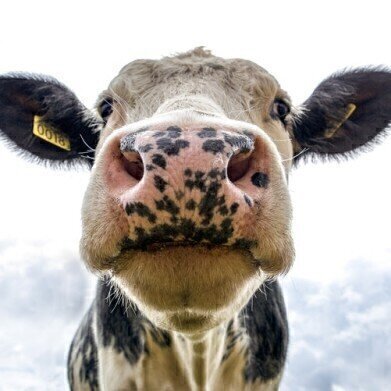LC-MS
Does a Cow's Diet Affect Their Milk? - Chromatography Explores
Jan 22 2020
Milk and milk products form a major part of many people’s diet. Cheese, yogurt and fresh milk on breakfast cereal are all ingredients in a healthy balanced diet - whatever the nut-milk enthusiasts might say. Two products that are made from fresh milk and used in dairy products are skim milk powder and whey. They are used in products including infant milk formula and protein shakes.
Research conducted by scientists in Ireland and published in the journal Metabolites has looked at whether a cow’s diet can impact the amino acids present in the milk. The paper - Impact of Bovine Diet on Metabolomic Profile of Skim Milk and Whey Protein Ingredients - reports on whether different feed systems impact on the metabolome of skimmed milk products and whey protein ingredients and also investigates on whether liquid chromatography-mass spectromentry can differentiate between samples from different feed systems.
Milk - a mix of genetics and diet
Skimmed milk powder and whey are used in many dairy products. Whey is obtained as a by-product of milk processing, such as from the manufacture of cheese. One of the benefits of whey and other dairy products is that they contain all of the essential amino acids that we need to live healthy lives. The essential amino acids are those that we cannot synthesize in our bodies - we have to obtain them from our diet or supplements.
Research shows that the amount of amino acids in milk is influenced mainly by genetic factors. Previous research suggests that the diet of a cow influences the overall nutritional quality of the milk produced - such as the fat content or individual amino acid concentration. But relatively little research has been reported on the impact of diet on the overall amino acid composition of milk. And with consumer interest rising as to the welfare and diet of the animals we use in our food production - this information could be useful for consumer choice.
Not all milk and whey is the same
The research team in Ireland assigned cows randomly to one of three diets; perennial ryegrass only, a mix of perennial ryegrass and white clover or an indoor feed. Raw milk was obtained from each group and processed on a small scale to make skimmed milk powder and whey. The total amino acid concentration from each sample type was then analysed using reverse-phase liquid chromatography-tandem mass spectrometry. The analysis of proteins is discussed in the article, Proteins Under Pressure.
The researchers report that they found significant differences in metabolites based on the three feeding systems they investigated. The authors report that: results demonstrate that the type of bovine feeding system used can have a significant effect on the amino acid composition and metabolome of skim milk and whey powders and may aid in the selection of raw materials for product manufacture.
Digital Edition
Chromatography Today - Buyers' Guide 2022
October 2023
In This Edition Modern & Practical Applications - Accelerating ADC Development with Mass Spectrometry - Implementing High-Resolution Ion Mobility into Peptide Mapping Workflows Chromatogr...
View all digital editions
Events
ACS National Meeting - Fall 2024
Aug 18 2024 Denver, CO, USA
Sep 04 2024 Chiba, Tokyo, Japan
Sep 04 2024 University of Warwick, Coventry, UK
Sep 10 2024 Rockville, MD, USA
Plastics Recycling World Expo Europe
Sep 11 2024 Brussels, Belgium














